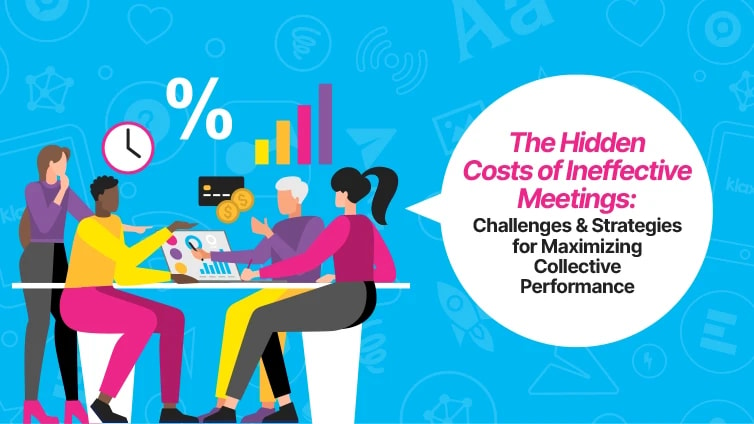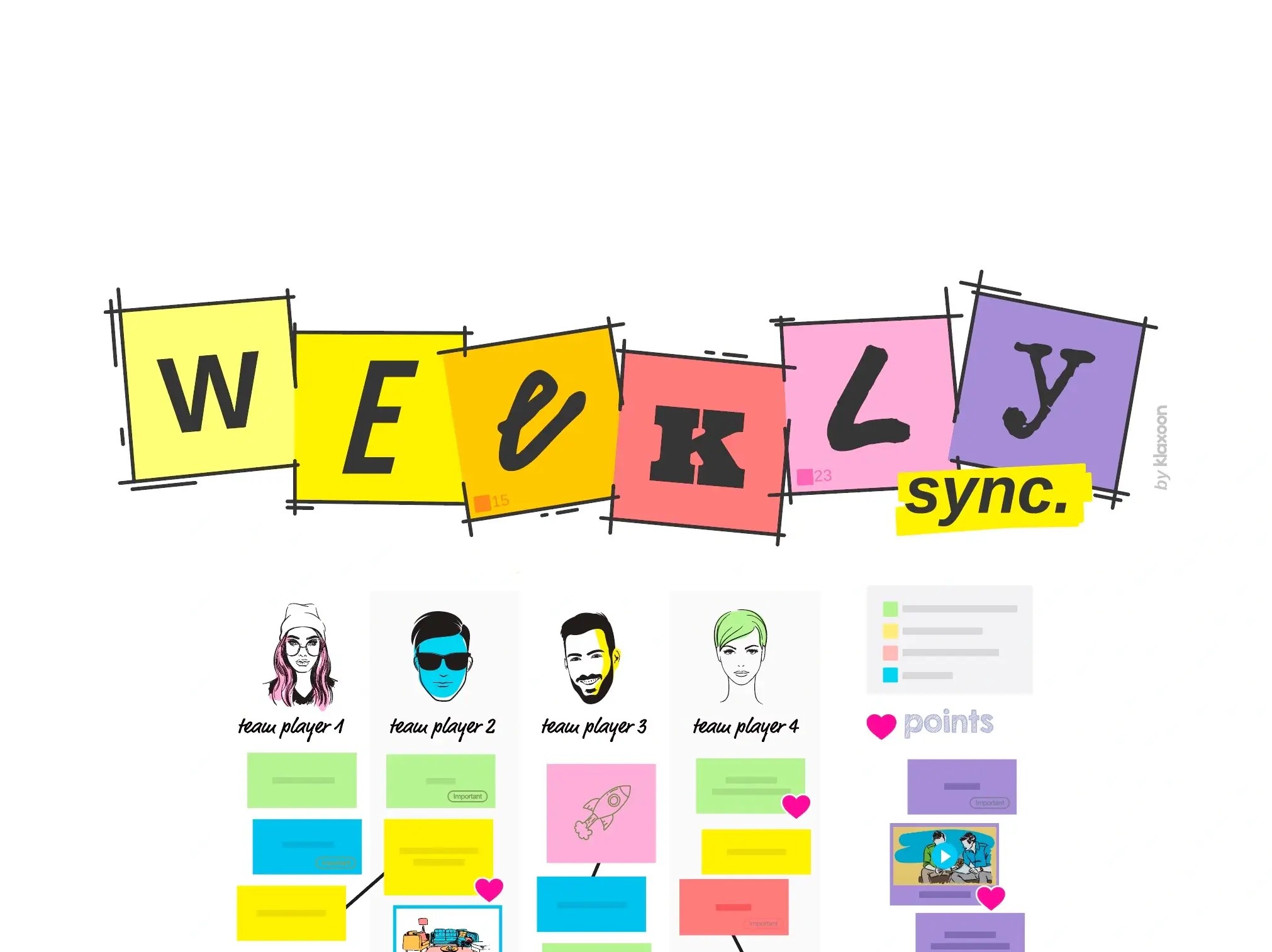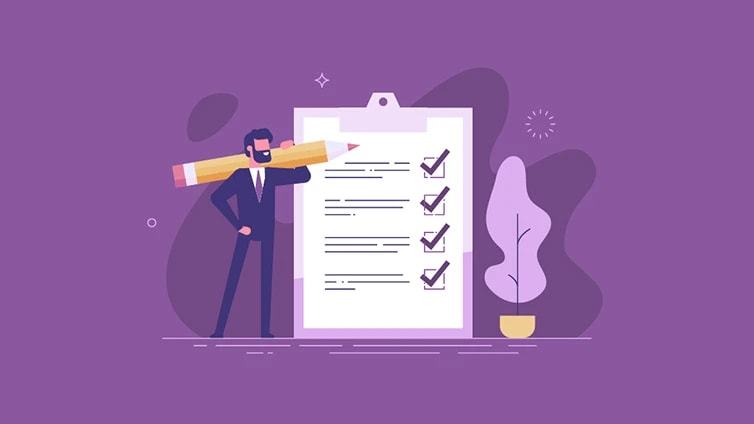9 super ideas to keep your meetings under 30 minutes
Executive summary:
Meetings. You schedule one to clarify a simple issue, and suddenly, you are in a 90-minute discussion about something entirely unrelated, probably involving a pie chart. By the time it wraps, you have lost track of the original question and most of your will to move forward.
If this sounds familiar, you are not alone. Research shows meetings are often unproductive, disrupt deep work, and pull teams away from meaningful progress. The thing is, the solution is not more meetings to fix bad meetings. It is about making the ones you do have count.
Here are 9 things you need to try to keep your work meetings short, sharp, and useful:
- Start with a clear objective;
- Limit the number of attendees;
- Set strict time limits for each topic;
- Encourage asynchronous updates;
- End with a concise action plan;
- Share the agenda and resources in advance;
- Define roles before the meeting starts;
- Use interactive and engaging formats;
- Leverage AI for meeting minutes.

Reduce the visible and hidden costs of your meetings by learning how to create an engaging and productive meeting space for everyone.

Not so long ago, meetings were a staple of office life. Rigid, time-consuming, and often packed with people who did not need to be there. They happened in stuffy conference rooms, ran longer than necessary, and usually ended with a vague promise to "circle back."
Fast forward to today. While technology has changed how we meet, the core problem remains: too many long meetings, not enough progress.
As an innovative SaaS platform designed to improve team collaboration, we have made it our mission to understand the challenges of modern meetings. What did we found?
Meetings are evolving, but not always for the better.
Video calls have replaced boardrooms, but they still suffer from the same inefficiencies. Meanwhile, teams are juggling live discussions, Slack threads, and endless email chains.
In this article, we break down 9 proven strategies to reduce meeting times without sacrificing productivity. From setting clear objectives to leveraging AI, these tactics will help your team collaborate smarter and avoid unnecessary meetings altogether.
How ineffective meetings are killing productivity
We have all been there. A meeting gets scheduled, everyone joins the call, and an hour later, nothing meaningful has been decided. No clear direction, no actionable outcomes, just confusion and a growing to-do list.
It is no surprise that too many meetings do more harm than good. Let’s break down exactly how ineffective meetings are getting in the way.
1. Reduced focus and engagement
Ever tried to stay engaged in a meeting that feels like it might never end?
It starts with good intentions. Then, the clock ticks past the 30-minute mark, and attention starts to drift. People check emails, glance at their phones, or mentally plan dinner. The longer a meeting goes on for, the more difficult it becomes to maintain high energy levels.
Finally, when engagement drops, so does the quality of discussion. Instead of productive collaboration, you get half-listening and polite nods with little real progress.
2. Delayed decision-making
Meetings should lead to decisions, but without structure, they often become an endless loop of discussion.
Ever heard, “Let’s put a pin in this for now and revisit later”? That is the sound of a meeting running in circles. Without clear objectives and time limits, conversations drift, and by the time the call ends, no one is quite sure what happens next.
The result? More meetings to discuss the same issues.
3. Wasted resources
Every minute spent in an unnecessary meeting is a minute lost elsewhere.
Think about it: an hour-long meeting with ten people is not just an hour, it is ten hours of collective work time gone.
Now multiply that across a week, a month, a year. That is a staggering amount of lost productivity, all because of meetings that could have been an email, a quick chat message, or an asynchronous message.
4. Increased fatigue and frustration
Back-to-back ineffective meetings can quickly become mentally exhausting.
By the third or fourth call of the day, decision fatigue sets in, and engagement drops drastically. Instead of leaving a meeting with fresh ideas, people walk away drained.
Over time, this constant cycle wears on morale, leading to disengaged teams and a workplace where meetings feel more like a chore than a tool for collaboration.
How many meetings are too many?
Excessive meetings disrupt workflow, limit focus, and weaken team synergy. A study by Harvard Business Review highlights just how much time meetings consume and the negative effects they have on employees. Let’s break down the key findings:
- 65% of respondents said meetings keep them from completing their own work. Meetings often pull employees away from critical tasks, forcing them to play catch-up after long discussions. Instead of driving progress, excessive meetings create bottlenecks that delay execution.
- 71% said meetings are unproductive and inefficient. Many meetings lack clear agendas or structured discussions, leading to wasted time. Without proper direction, conversations drift off-topic, resulting in little to no actionable outcomes.
- 64% said meetings come at the expense of deep thinking. Meetings break concentration and make it harder to engage in strategic, high-value work. When employees spend their day jumping between meetings, they lose the uninterrupted time needed for innovation and problem-solving.
- 62% said meetings miss opportunities to bring the team closer together. While meetings should foster collaboration, poorly executed ones do the opposite, leaving teams disengaged and disconnected. Without intentional structure and participation, meetings fail to strengthen alignment and morale.
Can communication training help reduce meeting times?
One of the most underrated skills in the workplace is communication. It does make sense, right? Tensions run high, people process information differently, and not everyone is comfortable speaking up.
That is where communication training comes in. Teaching teams how to express ideas concisely, listen actively, and navigate different communication styles can dramatically cut meeting times.
Let's dig a little deeper into how communication training can help reduce meeting time:
1. Encourage concise communication
Some people love to get straight to the point. Others? They take the scenic route. Pausing for detours, side stories, and unnecessary looping.
Communication training helps employees recognize when they are oversharing and teaches them how to deliver their thoughts with clarity. The result? Fewer tangents, less rambling, and a meeting that does not feel like a never-ending audiobook.
2. Improve active listening
Ever sat through a meeting where someone repeats the same point that was made 10 minutes ago? That is what happens when people aren’t listening.
Strong listening skills help teams absorb information the first time around, reducing redundant conversations. Regardless of whether someone is a note-taker or a visual processor, learning to engage properly can make meetings faster and far less painful.
3. Reduce misunderstandings
Tone, phrasing, and assumptions, small communication biases can snowball into major confusion. Someone says one thing, another person hears something else, and suddenly, a five-minute discussion turns into a 30-minute clarification session.
Training employees to express ideas clearly and check for understanding cuts down on these misunderstandings. Less time explaining, fewer follow-ups, and a whole lot less “Wait, what are we actually doing?” moments.
Why emotional intelligence is a core component of effective meetings
People assume meetings are purely about logic, about exchanging facts and making decisions based on reason alone. However, meetings are also social environments governed as much by emotional undercurrents as by the agenda itself.
When emotional intelligence is lacking, discussions devolve into power struggles, passive-aggressive remarks, or worse, complete disengagement. Here is why emotional intelligence is a non-negotiable skill for effective meetings.
1. It helps manage interruptions
A fundamental issue in meetings is that people do not know when to stop talking. They interrupt, not because they mean harm, but because they lack impulse control. They feel an idea, and they must express it now.
However, that kind of unchecked behavior derails discussions. Emotional intelligence trains people to regulate themselves, to pause, to consider whether their point is necessary at this moment.
2. It improves conflict resolution
Disagreements in meetings aren’t necessarily bad. In fact, they are vital.
To move forward, you need people to challenge ideas while taking into account the diverse thoughts that might emerge within your target audience.
The problem is that people often let emotions override reason, turning discussions into status contests rather than problem-solving exercises. Emotional intelligence teaches restraint and allows people to push back without making it personal.
3. It strengthens team collaboration
The workplace is filled with wildly different personality types. Some are assertive and dominant. Others are more reserved and analytical. When you throw all these individuals into a meeting, chaos ensues if they do not understand each other’s communication styles.
Emotional intelligence helps bridge these gaps. It forces you to be mindful, to recognize when someone is being thoughtful rather than disengaged, and to adapt your style to the people around you.
When that happens, meetings stop being frustrating and start becoming purposeful.
9 ways to remain efficient while keeping your meetings under 30 minutes (or less)
1. Start with a clear objective
Every meeting should have a defined purpose that can be summed up in a single sentence.
If the goal is unclear, the discussion is more likely to get off track, wasting time on unrelated topics. A focused objective keeps conversations aligned and outcomes actionable.
2. Limit the number of attendees
More people in a meeting means more opinions, more interruptions, and more time spent reaching a decision.
Keep the invite list short and include only those who play a direct role in the discussion. This allows for faster decision-making and a more streamlined conversation.
3. Set strict time limits for each topic
Without time constraints, discussions tend to expand far beyond what is necessary.
Breaking a meeting into timed segments helps maintain momentum and prevents any single topic from dominating the agenda. A structured approach keeps meetings on track and minimizes unnecessary back-and-forth.
4. Encourage asynchronous updates when possible
Not every discussion needs a real-time meeting. For routine updates or progress reports, work asynchronously: use emails, chat tools, or visual formats instead.
This frees up meeting time for discussions that require collaboration while keeping everyone informed.
5. End with a concise action plan
A meeting without clear next steps often leads to follow-up meetings and unnecessary backtracking.
Summarize key takeaways, assign responsibilities, and set deadlines before wrapping up. This keeps everyone aligned and minimizes the need for additional discussions.
6. Share the agenda and resources in advance
Sending out an agenda ahead of time allows participants to prepare, reducing the need for lengthy explanations during the meeting.
Providing supporting documents, reports, or key points in advance helps streamline discussions and improves the quality of input from attendees.
7. Define roles before the meeting starts
Assigning roles like facilitator, timekeeper, and note-taker prevents meetings from becoming disorganized.
A facilitator guides the discussion, a timekeeper keeps things moving, and a note-taker captures key points. This structure eliminates unnecessary repetition and keeps conversations efficient.
8. Use interactive and timed meeting formats
Meetings that lack structure can quickly lose momentum. Using timed segments - such as a 5-minute icebreaker, a 15-minute brainstorming session, and a 10-minute wrap-up - keeps discussions engaging and productive.
Tools like digital whiteboards, online surveys, and gamified activities help keep participants involved while maintaining a steady pace.
9. Leverage AI for meeting minutes
Manually summing up meeting notes can be time-consuming and not truly engaging.
AI-powered tools can summarize key points, highlight action items, and categorize important topics in seconds. Automating this process allows participants to focus on the conversation rather than on taking notes.
Conclusion
Managers, CEOs, and executives alike all agree. Meetings are like storms at sea. Small at first, but swelling into something far more chaotic than intended. Words spill over, threads unravel, and what should have been a simple discussion becomes an endless tangle of half-formed ideas and unsolved problems.
However, not every meeting has to feel like a slow unraveling. Clear objectives, structured time limits, and fewer attendees can keep discussions sharp. AI can capture what matters so minds stay present.
The best strategy? Speak with purpose, listen with intent, and, when possible, replace meetings with other forms of effective collaboration.
Unlock your teamwork potential
For free, make your first steps to top-tier work efficiency with the Klaxoon Work Collaboration Platform.

